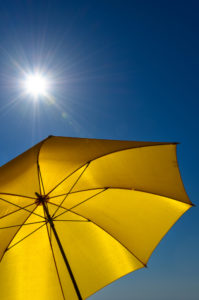
Most people know to protect themselves from Ultraviolet (UV) rays using traditional sunblock because of increasing skin cancer awareness. It is a less common understanding when it comes to the dangers UV radiation poses to your eyes, but like skin cancer awareness, sun damage to eyes is becoming a growing concern around the world.
Extended exposure to UV rays is linked to various eye conditions including macular degeneration, cataracts, and pterygium.
It is good to see a raised level of awareness surrounding these issues, but in regards to how and when you should protect yourself from the dangers of UV radiation, there are some common misconceptions. Here are a few UV safety facts to keep in mind:
So, regardless of the weather, be sure to make it a part of your routine before going outdoors to always keep that sunblock handy, wear a hat, and to not forget your 100% UV protective sunglasses to protect your eyes from sun damage.
© 2025 Washington Eye Physicians & Surgeons
The material contained on this site is for informational purposes only and is not intended to be a substitute for professional medical advice, diagnosis, or treatment. Always seek the advice of your physician or other qualified health care provider.